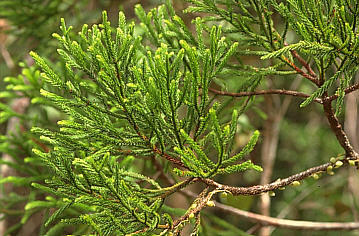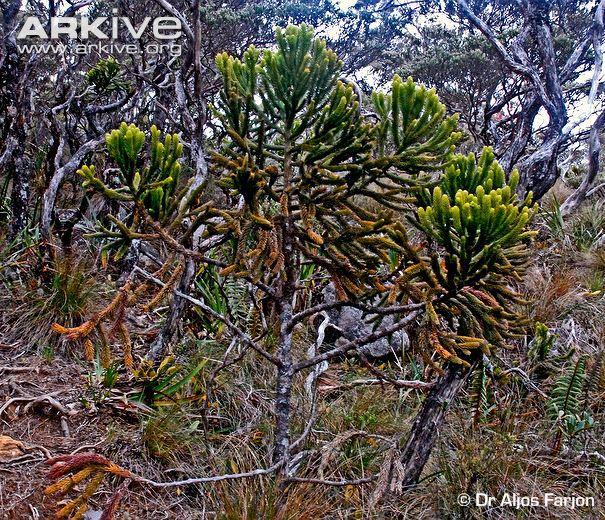Dacrydium gibbsiae was first described by Stapf 1914. It is synonymous with Dacrydium beccari var. kinabaluense which was described by Corner in 1939.
Description. Dacrydium gibbsiae is a small evergreen coniferous tree in the podocarpaceae family, which grows 6 to 35 feet (2-12 m) tall. Its juvenile leaves spread widely, slightly curved forward towards the spiny tip, and is at least 0.5 inch (12 mm) long, slightly wider than thick. The adult leaves are robust, the acute tip bent to be parallel to the branch or even curved slightly inward, crowded, linear or linear-lanceolate, 0.2 to 0.3 inch (5-8 mm) long, concave on the axial side, strongly keeled on the dorsal side. Fertile structures occur on the terminals, often on a short lateral branch. Pollen cones are 0.8 to 1 inch (20-25 mm) long and 0.25 inch (4.5 - 7 mm) in diameter. Seed-bearing structure consists of bracts slightly narrower than ordinary foliage leaves and increasing slightly in length towards the apex where one or two may be fertile, spreading slightly and completely covering the epimatium but surpassed by the apex of the mature seed which is 0.2 inch (4.5 mm) long.
Distribution. This species is native to northern Borneo where it is common on the flanks of Mt Kinabalu. It is co-dominant on ultra-basic soils in the mountain mossy cloud forests from 3,000 to 11,500 feet (1500 - 3600 m) elevation. It is quite tolerant of ultramafic soil and is notable for being able to tolerate the high levels of toxic metal compounds present in these soils.

